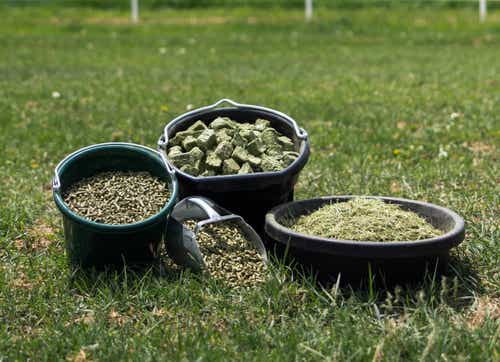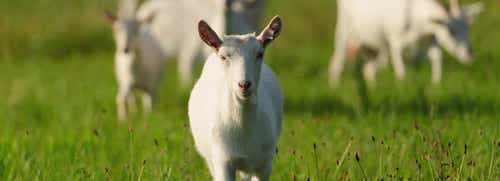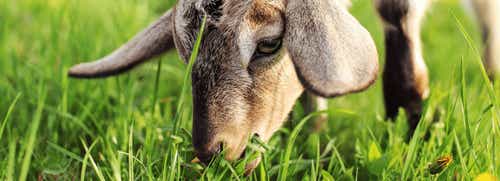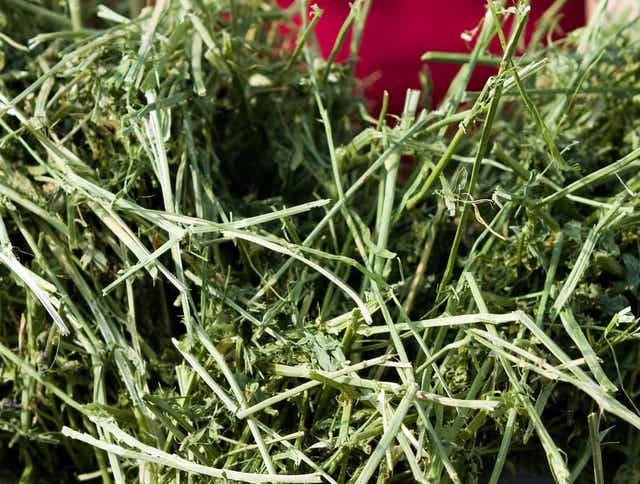
What Type of Hay Should I Feed My Horse?
It can be confusing knowing what type of hay to feed horses and other livestock. We pulled together some of the more common questions we hear about feeding hay, from horse and livestock owners. Did we get your question answered? Check them out below!
6 Common Questions About Feeding Hay and Different Varieties
1.) What are the differences between types of hay?
There are so many varieties of hay, but let’s do a quick overview of a few common ones fed to horses and other livestock.
- Alfalfa: is a legume that is low in sugar, moderately high in protein, high in calories and digestible fiber. This forage is ideal for horses and other livestock that are growing (rapid growth when young), underweight, those sensitive to carbohydrates, in late pregnancy or lactation and for horses with gastric ulcers.
- Teff: is a warm season grass that is low in sugar, high in fiber and highly palatable. It is ideal for animals that are sensitive to sugars and starches. Teff grass forage is particularly recommended for horses with Insulin Resistance, Cushing’s, Tying-Up Syndrome or who are overweight.
- Orchard: is a cool season grass that is typically higher in protein and calories compared to Timothy and can be moderate to high in sugar content. This grass forage is recommended for horses and other livestock that are growing (slow to moderate growth), mature and overweight, as well as those in early pregnancy, breeding stallions, horses with HYPP and performance horses.
- Timothy: is a cool season grass that is highly palatable, low to moderate in protein and high in digestible fiber. This grass forage is recommended for horses and other livestock that are growing (slow to moderate growth), mature and overweight, as well as those in early pregnancy, breeding stallions, horses with HYPP and performance horses.
2.) How many “flakes of hay” should I feed my horse? How do you know how many pounds of pellets to feed compared to flakes of hay?
As easy as it is to just toss in a few flakes of hay to the feeder, we should avoid feeding our horses by “flakes” and instead by weight. Horses should be fed by weight and not by volume at the rate of about 1.5% to 2.5% of their body weight per day in forages. Flakes can vary in size, leaving some bigger and some smaller than others depending on the baling process. Have you heard the riddle about what weighs more, one pound of rocks or one pound of feathers? Instinctively, many of us may jump to say rocks, because rocks are heavier than feathers, right? However, we’re talking weight, not comparing one individual rock to one individual feather. One pound of rocks is the same weight as one pound of feathers. So, if a 1,000 pound horse needs 2% of their body weight in hay, they should be fed 20 pounds of hay a day and we can’t accurately determine what that amount is with flakes.
When weighing feed, it should be measured dry, because when you add water, you are only adding water weight to the product. This doesn’t matter what format you feed because a pound of long-stemmed hay, equals a pound of pelleted hay, equals a pound of cubed hay. Again, weighing the hay, regardless of the format, will help keep your horse’s diet on the right track.
For other animals, check out our nutrition expert’s recommended feeding rates on our website.
3.) What is the most common mistake caretakers make when choosing hay for their horses and ponies?
Buying the cheapest hay they can find. Forage is the most important part of the horse’s diet and can provide your horses with energy, protein vitamin and minerals. Buying high quality forage for your horses is making an investment in their health.
4.) What hay is best to feed a horse with gastric ulcers?
There are an estimated 58% of show horses, 93% of racehorses and 25-50% of foals with gastric ulcer issues. Alfalfa is an ideal forage for horses with or healing from gastric ulcers, due to its calcium content. Feeding a little bit of alfalfa before riding or working, can help buffer the acidity splashing around in the stomach.
5.) What type of hay is best for easy keeper horses?
Easy keeper horses tend to struggle with being overweight or putting on weight easily. Grass forage is a better option for easy keeper horses, such as orchard, timothy or teff grass. Lower in calories, this can fulfill their fiber requirements without too many added calories.
6.) What type of hay is best for hard keeper horses?
Hard keeper horses tend to struggle with being underweight or have a hard time keeping weight on. Alfalfa or mixed forages are ideal forage options for hard keeper horses, e.g. straight alfalfa, alfalfa/timothy grass or alfalfa/oat grass. Although not a hay, but a great fiber source, beet pulp is higher in calories and can also be a helpful addition to hard keeper horse diets.
Still have questions on what type of hay you should feed your horse? Dr. Cubitt discusses the importance of the following points, in order to identify the forage type most suitable for your horse, in a webinar recording titled, “What Type of Hay Should I Feed My Horse? Pros and Cons of Alfalfa, Timothy, Orchard and Bermuda”:
- How old is your horse?
- What is the physiologocial stage or use of the horse?
- Has your horse been diagnosed with any relevant medical issues?
- What is your horse’s body weight?
You can also find presentation notes, along with supplemental learning materials shared during the webinar at the recording link above.
Standlee recommends consulting with your veterinarian or a nutritionist when changing your animal’s feeding program. Please call our Standlee Customer Service team at 1-800-398-0819 or email customerservice@standlee.com, with any additional feeding questions.

